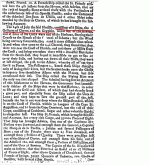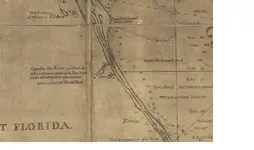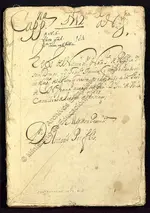ivan salis
Platinum Member
- Joined
- Feb 5, 2007
- Messages
- 16,794
- Reaction score
- 3,812
- Golden Thread
- 0
- Location
- callahan,fl
- 🏆 Honorable Mentions:
- 1
- Detector(s) used
- delta 4000 / ace 250 - used BH and many others too
in the book --the funnel of gold -- there are referances to the Spanish rep vale not being fooled by English govenor Hamilton --since VALE KNEW that the capt of the "English prize" vessel taken by Echeverz's pataches off south America for illegal trading * had stated that the ship could not be seized because it was 25% owned by Hamilton. ( they took it anyway-- but sent it directly to Havana with a small prize crew to avoid any "leaks" about it being taken * ) the fact it was taken was kept under wraps so to speak --and Echeverz having already taken 2 other larger vessels (a dutch and French vessel) already as "prizes" and needing cash --sold the small English vessel to Ubilla when he arrived in Havana later on due to the fact that Ubilla had lost 4 patache class small vessels while in mexico.-- the original English name was MARI --IT WAS A GALARA CLASS VESSEL * OF THE ENGLISH BALANDRA TYPE BUILD -- with the name / class ---MARI / GALARA -- ECHEVERZ -- renamed it SAN MIGUEL DE EXCELSIS (SAN MIGUEL WAS ECHEVERZ'S PATRON SAINT--THUS THE MULTIPLE "SAN MIGUELS" IN HIS FLEET -- 3 OF THEM --THE TOBACCO HAULING NAO THAT STAYED IN HAVANA (SAN MIGUEL) #1 --THE DUTCH PRIZE VESSEL (OLANDESA) TAKEN OFF SOUTH AMERICA --( SAN MIGUEL #2) AND THE SMALLISH ENGLISH PRIZE VESSEL (#3 SAN MIGUEL DE EXCELSIS) the vessel was again "renamed" when it was taken over by Ubilla -- again the "patron saint" name was used but this time it was Ubilla's patron saint -- same as his fleet command vessel. AS TO THE NUMBER OF VESSELS IN THE FLEET -
-I would think that the Sept 20th ,1715 letter from SALMON (2ND IN COMMAND OF THE FLEET AT THE TIME OF WRECKING AND IN COMMAND OF SALVAGE OPERATIONS ) TO THE KING OF SPAIN ---WOULD BE THE PROPER ACCOUNTING --IT SAYS OF THE FLEET 9 ARE KNOWN TO BE WRECKED , AND 2 OF THE "GALLONES" ARE MISSING , BUT ARE THOUGHT TO HAVE BEEN LOST ON THE HIGH SEAS BECAUSE THE WRECKAGE OF A LARGE VESSEL OR VESSELS WAS FOUND ON THE (COAST NORTH / NORTH COAST?) OF ST AUGUSTINE ---(ECHEVERZ'S FLEET WAS KNOWN AS "THE GALLONES DE TERRA FIRME" --SO 2 OF HIS VESSELS WERE UNACCOUNTED FOR) --3 OF ECHEVERZ'S VESSELS BROKE AWAY FROM THE MAIN 8 VESSEL FLEET (ALL 5 OF UBILLA'S FLEET , BOTH ROYAL TREASURE VESSELS OF ECHEVERZ'S FLEET AND THE "DUTCH PRIZE" OLANDESA / SAN MIGUEL.) THE 3 THAT BROKE AWAY WERE -- #1 THE FRECH PRIZE VESSEL (EL CIERVO) #2 THE TOBACCO HAULING NAO (SAN MIGUEL) AND #3 THE "CONCEPTION" (WHICH REPORTLY SANK SOMEWHERE NEAR CAPE CANAVERAL --AS 4 MEN OFF IT WERE FOUND ON THE CAPE AREA --AFTER FLOATING ON A HATCH COVER DRIFTING AT SEA FOR 2 DAYS) --WITH THE 8 KNOWN SUNK (DOWN SOUTH) AND THE CONCEPTION ACCOUNTED FOR AS SUNK NEAR THE CAPE THATS 9 WITH 2 "MISSING IN ACTION" THAT ACCOUNTS FOR ALL 11 SPANISH VESSELS OF THE FLEET AND WITH THE GRIFFON THAT MAKES A TOTAL OF 12 VESSELS IN THE FLEET.
-I would think that the Sept 20th ,1715 letter from SALMON (2ND IN COMMAND OF THE FLEET AT THE TIME OF WRECKING AND IN COMMAND OF SALVAGE OPERATIONS ) TO THE KING OF SPAIN ---WOULD BE THE PROPER ACCOUNTING --IT SAYS OF THE FLEET 9 ARE KNOWN TO BE WRECKED , AND 2 OF THE "GALLONES" ARE MISSING , BUT ARE THOUGHT TO HAVE BEEN LOST ON THE HIGH SEAS BECAUSE THE WRECKAGE OF A LARGE VESSEL OR VESSELS WAS FOUND ON THE (COAST NORTH / NORTH COAST?) OF ST AUGUSTINE ---(ECHEVERZ'S FLEET WAS KNOWN AS "THE GALLONES DE TERRA FIRME" --SO 2 OF HIS VESSELS WERE UNACCOUNTED FOR) --3 OF ECHEVERZ'S VESSELS BROKE AWAY FROM THE MAIN 8 VESSEL FLEET (ALL 5 OF UBILLA'S FLEET , BOTH ROYAL TREASURE VESSELS OF ECHEVERZ'S FLEET AND THE "DUTCH PRIZE" OLANDESA / SAN MIGUEL.) THE 3 THAT BROKE AWAY WERE -- #1 THE FRECH PRIZE VESSEL (EL CIERVO) #2 THE TOBACCO HAULING NAO (SAN MIGUEL) AND #3 THE "CONCEPTION" (WHICH REPORTLY SANK SOMEWHERE NEAR CAPE CANAVERAL --AS 4 MEN OFF IT WERE FOUND ON THE CAPE AREA --AFTER FLOATING ON A HATCH COVER DRIFTING AT SEA FOR 2 DAYS) --WITH THE 8 KNOWN SUNK (DOWN SOUTH) AND THE CONCEPTION ACCOUNTED FOR AS SUNK NEAR THE CAPE THATS 9 WITH 2 "MISSING IN ACTION" THAT ACCOUNTS FOR ALL 11 SPANISH VESSELS OF THE FLEET AND WITH THE GRIFFON THAT MAKES A TOTAL OF 12 VESSELS IN THE FLEET.
Amazon Forum Fav 👍
Last edited:








